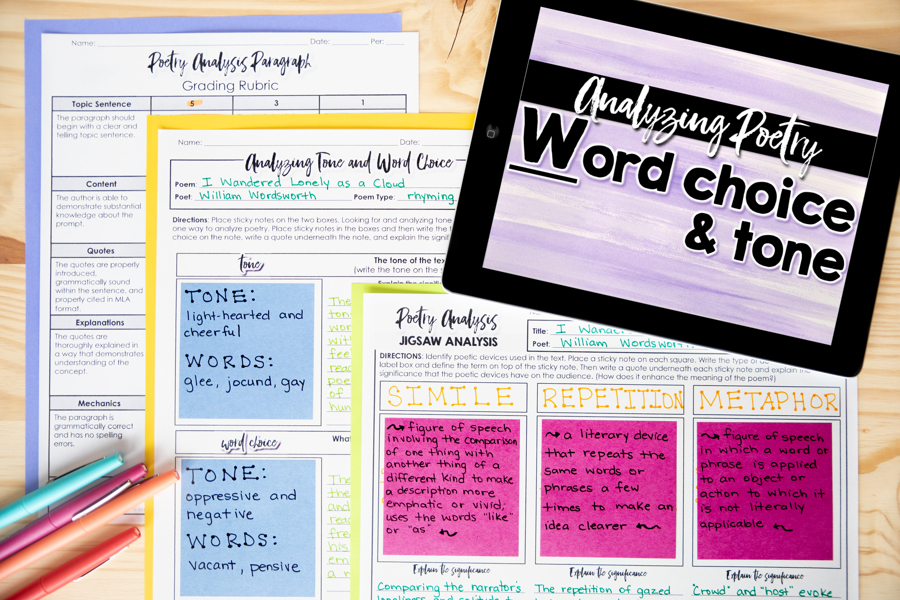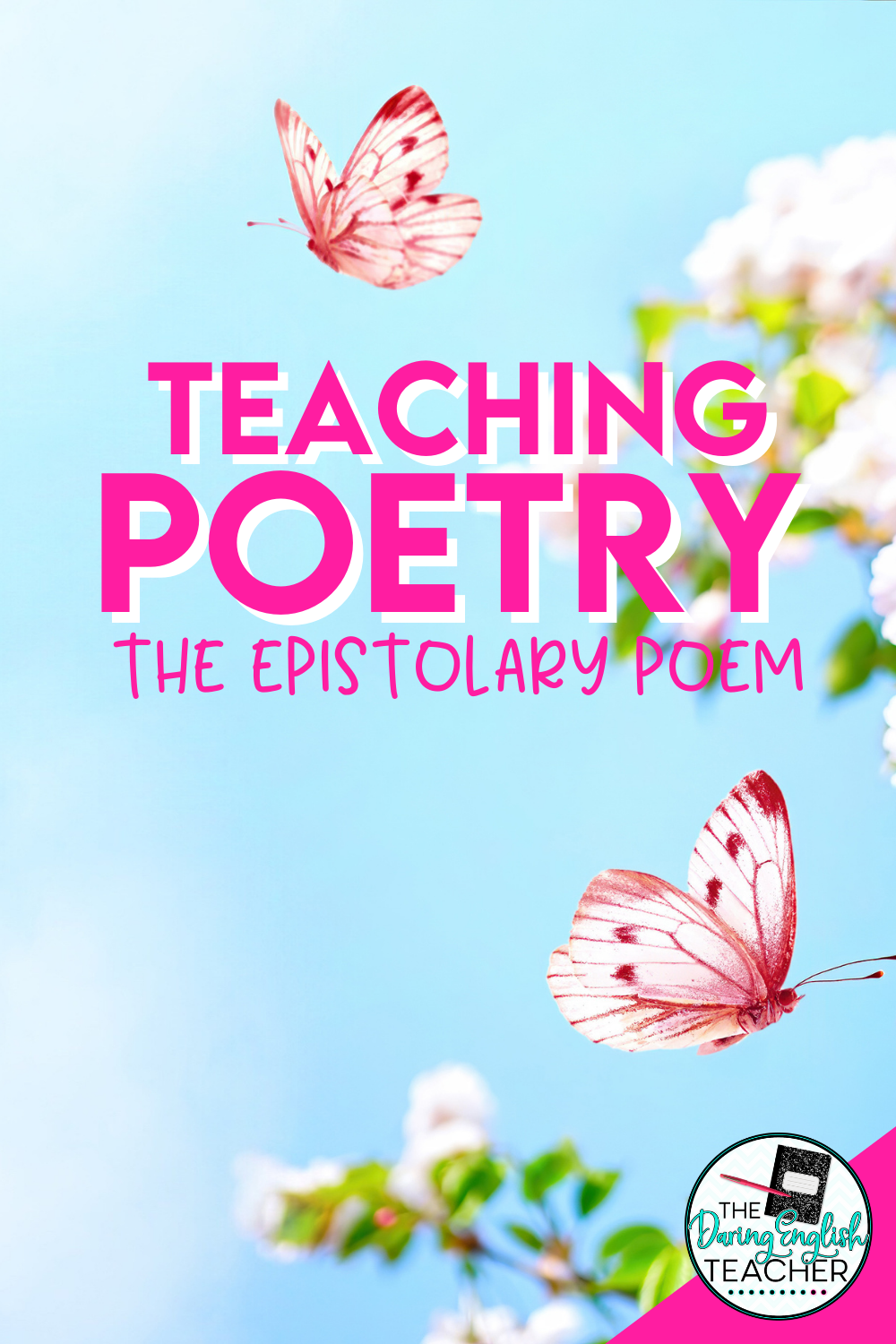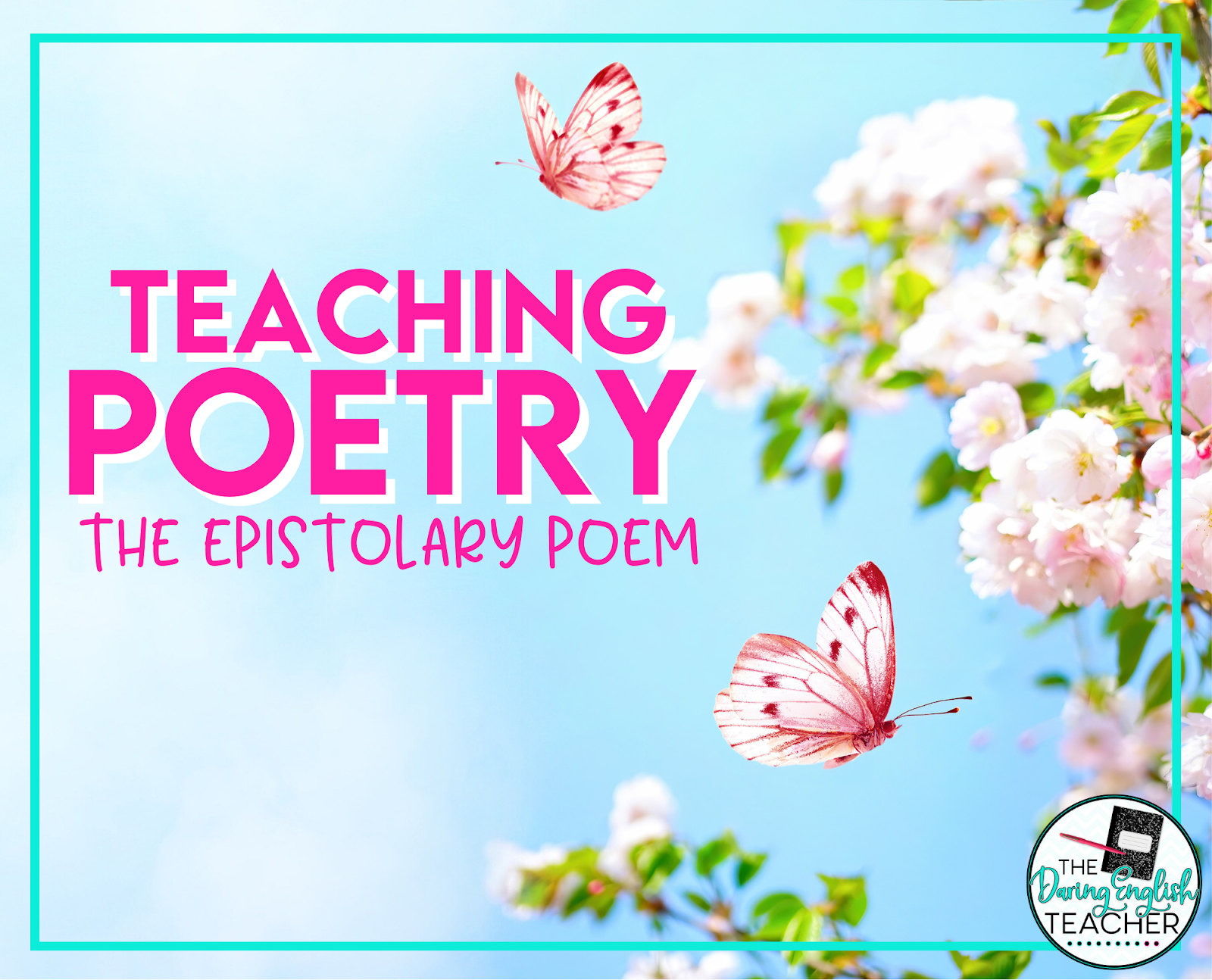One of my favorite poems to assign during my poetry teaching unit is the epistolary poem. When students write their epistolary poems, they really open up, and I always learn so much about them.
 An epistolary poem is a poem written as a letter, and I introduce this assignment after teaching the basic elements of poetry and poetry analysis to my students. When I teach poetry, I use this Sticky Note Poetry Analysis unit.
An epistolary poem is a poem written as a letter, and I introduce this assignment after teaching the basic elements of poetry and poetry analysis to my students. When I teach poetry, I use this Sticky Note Poetry Analysis unit.
To start this assignment, I like to begin by sharing Kobe Bryant’s epistolary poem Dear Basketball with my class. This poem is not only engaging, but it is also an excellent mentor text for the students to use when they begin writing their epistolary poem.
Once my students move on to writing their own epistolary poems, they really open up and write from the heart. It is amazing.
Teaching the Epistolary Poem Day 1
On the first day of this activity, I share Kobe Bryant’s poem with the class. Before introducing the poem, I review imagery, structure, and apostrophe with students. We first watch the video of the poem. After students watch the video, I then have them read the poem independently –just reading, no analysis yet.
From there, I have the students work in their table groups to identify Bryant’s imagery. They highlight examples of descriptive or figurative language, and then discuss the imagery. They also identify uses of apostrophe in the poem. After doing this, I then have students share what they found with their table groups.
Once students see the imagery that Bryant uses in his poem, we then go back in to analyze it for the personal details that Bryant includes. We focus on specifically how Bryant organizes his poem.
We end the class period by watching the video once more. With the second watch, I ask students to focus on how the illustrators captured the imagery of Bryant’s poem. I also ask them to focus on the organization.
I conclude the class period by letting the students know that we will be writing our own epistolary poem the following day. I ask students to start thinking about an object, thing, idea, or person they want to write the poem.
Teaching the Epistolary Poem Day 2
To start out the second day of this activity, I have the students start a brainstorming bell ringer activity. I ask my students to brainstorm and write down five different people or things they might be interested in writing their poem to. I like to start with a quick brainstorming bell ringer on writing days to get the students prepared for the writing activity.
After the bell ringer, I like to move to a more focused brainstorming activity. Four students sit at each table, and each uses a marker to write their answers. I tell them that their answers can be single words, phrases, complete sentences, bullet points, or even illustrations for this brainstorming activity.
 Here is a list of questions I ask the students during this brainstorming activity:
Here is a list of questions I ask the students during this brainstorming activity:
- What is your topic?
- When was the first time you met this topic?
- What are three adjectives you can use to describe this topic?
- What are two adverbs you can use to describe how this topic does something?
- What is your favorite or least favorite memory of this topic?
- What does this topic mean to you?
- Draw a quick illustration that represents the topic.
After the brainstorming activity, I introduce students to the assignment and tell them what elements they will need to include in their poem.
For their poem, students will need to meet the following requirements:
- 200-400 words
- 6 stanzas minimum
- 5 uses of apostrophe
- 5 purposeful uses of imagery
- Tell a story in chronological order
Students then begin drafting their epistolary poems. When students write poetry in the classroom, I like to turn on some soft jazz music in the background.


